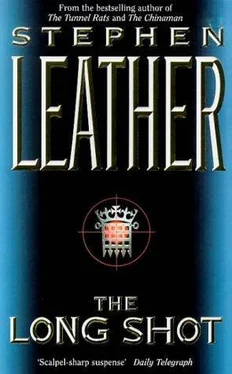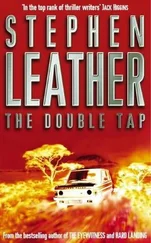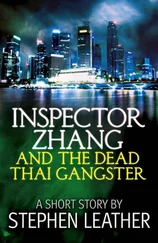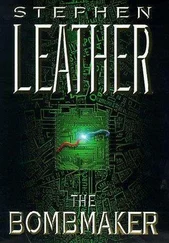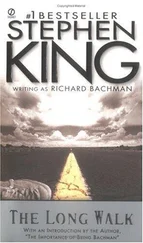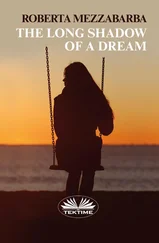Stephen Leather - The Long shot
Здесь есть возможность читать онлайн «Stephen Leather - The Long shot» весь текст электронной книги совершенно бесплатно (целиком полную версию без сокращений). В некоторых случаях можно слушать аудио, скачать через торрент в формате fb2 и присутствует краткое содержание. Жанр: Триллер, на английском языке. Описание произведения, (предисловие) а так же отзывы посетителей доступны на портале библиотеки ЛибКат.
- Название:The Long shot
- Автор:
- Жанр:
- Год:неизвестен
- ISBN:нет данных
- Рейтинг книги:5 / 5. Голосов: 1
-
Избранное:Добавить в избранное
- Отзывы:
-
Ваша оценка:
- 100
- 1
- 2
- 3
- 4
- 5
The Long shot: краткое содержание, описание и аннотация
Предлагаем к чтению аннотацию, описание, краткое содержание или предисловие (зависит от того, что написал сам автор книги «The Long shot»). Если вы не нашли необходимую информацию о книге — напишите в комментариях, мы постараемся отыскать её.
The Long shot — читать онлайн бесплатно полную книгу (весь текст) целиком
Ниже представлен текст книги, разбитый по страницам. Система сохранения места последней прочитанной страницы, позволяет с удобством читать онлайн бесплатно книгу «The Long shot», без необходимости каждый раз заново искать на чём Вы остановились. Поставьте закладку, и сможете в любой момент перейти на страницу, на которой закончили чтение.
Интервал:
Закладка:
Mary Hennessy was forty-nine years old and a widow, according to her file. Her husband had been killed in a shoot-out three years previously when his car was ambushed by what was believed to have been a Protestant hit squad. Liam Hennessy had been a leading Belfast lawyer but had also acted as a senior adviser to Sinn Fein, the political wing of the Provisional Irish Republican Army. The men responsible for the attack were never caught, and the file detailed a speech Mary Hennessy had made at the funeral in which she accused the British Government of conducting a political assassination. She believed that it was the SAS who murdered her husband as part of a British plan to obliterate the IRA as a viable terrorist organisation.
In the file was a separate FBI research paper which went into the alleged shoot-to-kill operation in some detail, though its resolution was inconclusive. What was known for sure was that some two dozen top IRA activists had died within a four-week period which followed the downing of a 737 airliner en route from London to Rome. The IRA had never officially claimed responsibility for the bombing of the jet, but the device was known to have been planted by a female bomb-maker who was killed when the SAS stormed the London flat which she and other IRA members were using as a base. Following the death of the woman, Maggie MacDermott, and her colleagues, a six-month bombing campaign came to a sudden halt, leaving the British authorities in no doubt that the IRA cell had been responsible. Several days after the downing of the jet, in which more than one hundred people died, two IRA terrorists were shot dead in a pub in Dublin by masked gunmen who were believed to be members of the Ulster Defence Volunteers, a Protestant para-military group. More assassinations followed and it seemed as if there was a tricolour-draped coffin being lowered into the ground every day. Several top-ranking IRA chiefs died in suspicious road accidents, running off cliffs at high speed or smashing in to trees on perfectly clear roads, and there were half a dozen supposed suicides, varying from a bathroom electrocution to self-inflicted shotgun wounds. Within four weeks the IRA was totally demoralised. Many of its members fled from Northern Ireland to the South or to the United States.
British newspapers ran screaming headlines about a shoot-to-kill operation being sponsored or encouraged by the government, but generally the press and the public seemed to think that whatever was happening was a just retribution for the terror the IRA had wreaked in the United Kingdom. That there was indeed a shoot-to-kill policy was vehemently denied by the Prime Minister and the Army, and no evidence was ever produced to prove beyond a doubt that the killings were government-sanctioned. However, one of the FBI’s analysts had run several statistical tests on the sudden deaths and determined that the odds of the twenty-four assassinations, suicides and road accidents occurring within a four-week period were of the order of six billion to one. There was no doubt that the killings were premeditated and the work of one group, but whether it was the SAS, MI5, the Army, or Protestant extremists, was still a mystery and one that was never likely to be solved. Whoever was responsible, the end result was the temporary destruction of the IRA as a terrorist threat. Most of those killed were the leaders and the planners, and without them the IRA was a headless snake, thrashing around waiting to die.
For a time it was Mary Hennessy who had tried to pull the organisation together, beginning with her anti-British speech at her husband’s funeral. She called in vain for a public inquiry into the IRA deaths but her appeals were ignored and a year after burying Liam Hennessy she went underground, becoming a fully-fledged terrorist for the first time in her life. She organised a bombing campaign in Belfast which resulted in the destruction of an RUC station and an Army barracks. When Northern Ireland became too dangerous for her she moved over the border. From the South she made frequent forays back into Northern Ireland, her attacks always aimed at the British forces or the Royal Ulster Constabulary. Her fight was not religious in any way, it was political and aimed at those she blamed for the death of her husband. According to the FBI file she was responsible for the death of three undercover SAS officers who had been caught operating in the border country. Her torture of the men had been especially brutal and she’d been branded by the tabloid press as ‘The Black Widow’. It appeared as if she had become mentally unbalanced after the death of her husband, and she was described in one RUC report as borderline psychotic. Mary Hennessy had never come close to being captured, and the last report in the file said that she was living close to Dublin, staying with various IRA sympathisers and still trying to rebuild the terrorist organisation.
Appended to the file was a comprehensive list of all the IRA’s terrorist attacks over the previous twenty years. Howard was familiar with many of the atrocities: car bombs, sniper attacks, fire bombs, torture. No-one seemed to be beyond the range of the terrorists. They’d come close to killing Margaret Thatcher at a Conservative Party Conference by blowing up the hotel she was staying at, and during the run-up to the Gulf War they’d managed to launch home-made mortars against Number Ten Downing Street while Prime Minister John Major was meeting with his War Cabinet. Judges, Army officers, politicians, all had been assassinated by IRA hit squads, and for every terrorist captured and imprisoned, another dozen were waiting to take their place.
Howard looked at his watch and realised it was time to leave. He drove quickly through the afternoon traffic and reached the office where the meeting was to be held shortly before two o’clock. The office belonged to a leading lawyer whom Howard had met on several occasions. There were more than a dozen people there, most of them men and most, like Howard, wearing business suits. A taxi driver served coffee as they took their places in the chairs which had been brought into the plush office. The lawyer allowed the large office to be used for AA meetings once a month, but Howard had seen him at other venues: basketball courts, scruffy basements in run-down buildings, back rooms in public libraries.
The group sat and listened to one of the members, an out-of-town fertiliser salesman called Gordon, tell his life story. It was depressingly familiar: a good job, steady income, a wife and child, more stress than he could cope with, and a descent into the bottle. Gordon told the group he hadn’t had a drink for six months, and he was warmly applauded.
Howard was next to speak and he took his place in front of the two ranks of chairs. The first time he’d attended an AA meeting he’d been more than a little cynical, he’d considered the public breast-beating to be little more than mental masturbation, that the speakers were just taking pleasure from publicly reopening old wounds. He had trouble too in dealing with the religious aspects of the meetings and the reliance on God, until a long-term AA member had suggested that he think of God as a Group of Drunks, and from that point on he’d become a convert. Now, after almost four years of regular attendance, Howard knew how valuable the meetings were in the battle against the bottle, and that telling others about his setbacks and successes strengthened his own resolve.
He put his coffee cup on the desk and clasped his hands behind his back. “My name’s Cole, and I’m an alcoholic,” he said. “Hi, Cole,” the group chanted. “It’s been almost four years since I had a drink,” he continued. The group applauded and there were several cries of “Well done”. Howard waited until the clapping died down. “I didn’t know I had a drinking problem, I guess no-one in the office had the courage to tell me. But I was making mistakes, both at work and at home. There were arguments with my co-workers and fights with my wife. Everything came to a head when I crashed our car. Well, it was my wife’s car, really, but I was driving. We both had our seat belts on, or I’m sure we’d have died. I hit a truck, we went off the road, and the next thing I knew, I was in hospital. My father-in-law found out, and he personally booked me into a clinic to dry out.”
Читать дальшеИнтервал:
Закладка:
Похожие книги на «The Long shot»
Представляем Вашему вниманию похожие книги на «The Long shot» списком для выбора. Мы отобрали схожую по названию и смыслу литературу в надежде предоставить читателям больше вариантов отыскать новые, интересные, ещё непрочитанные произведения.
Обсуждение, отзывы о книге «The Long shot» и просто собственные мнения читателей. Оставьте ваши комментарии, напишите, что Вы думаете о произведении, его смысле или главных героях. Укажите что конкретно понравилось, а что нет, и почему Вы так считаете.
